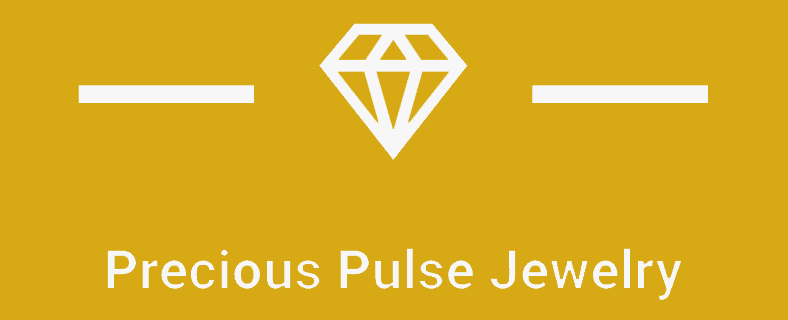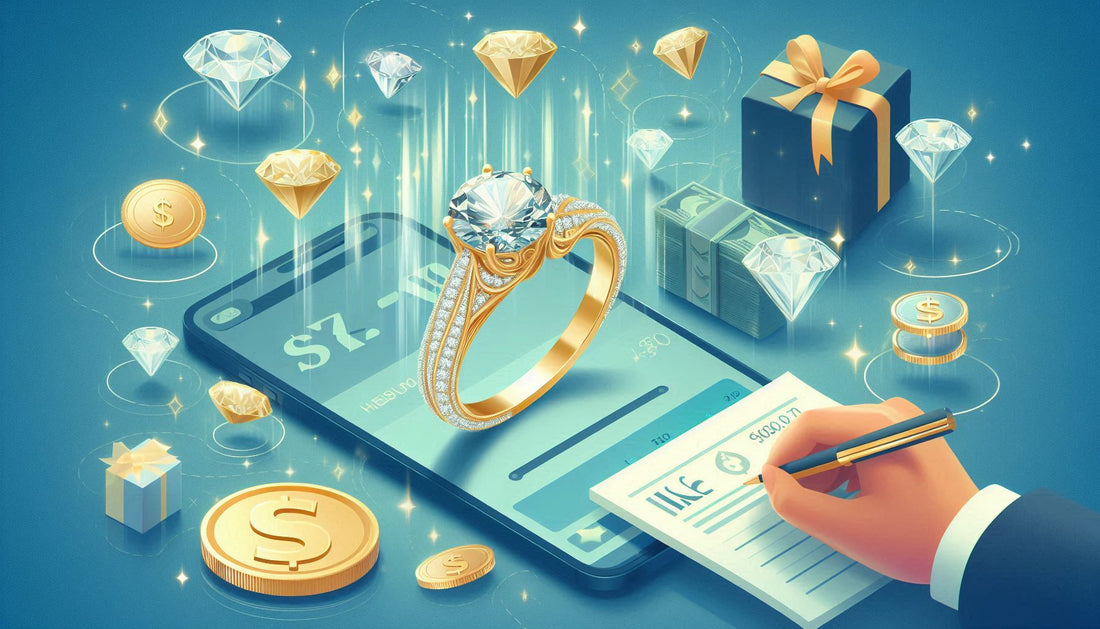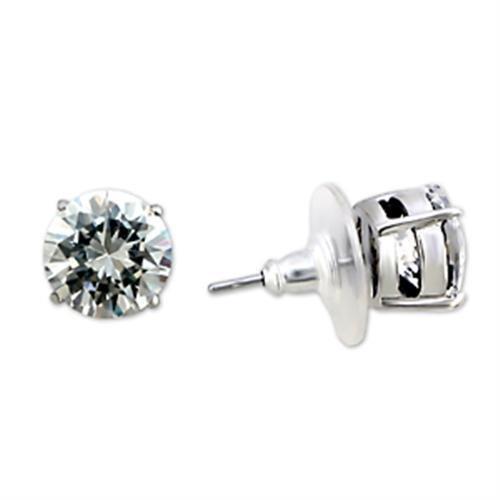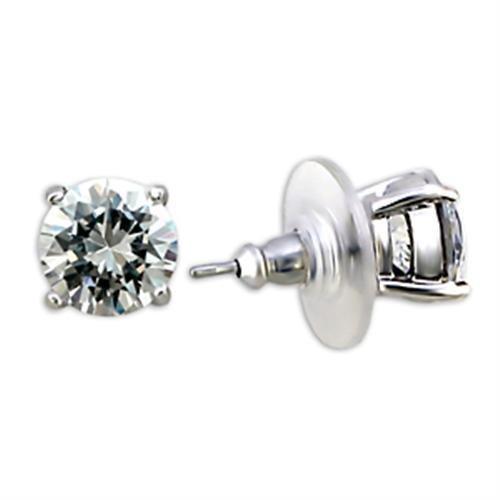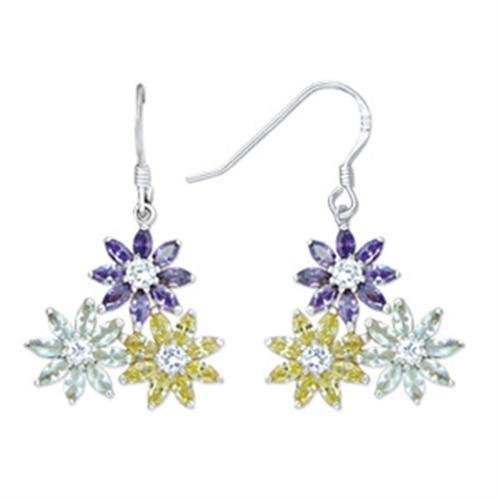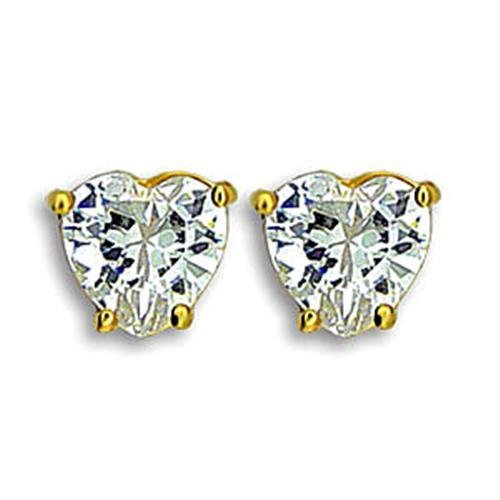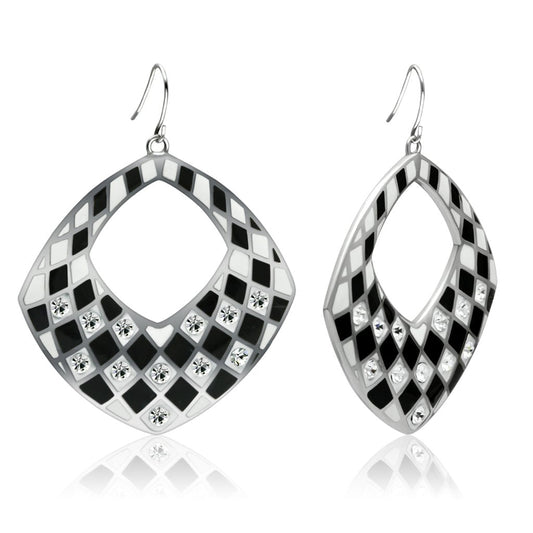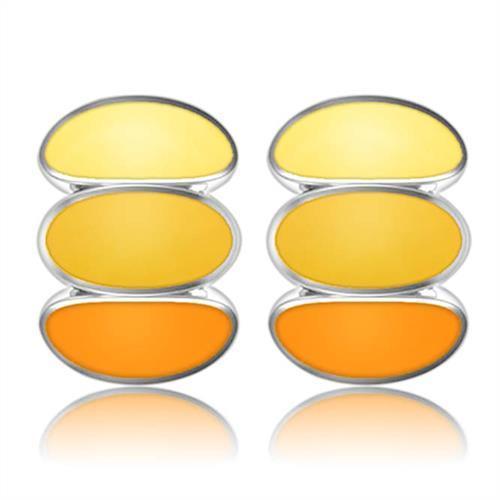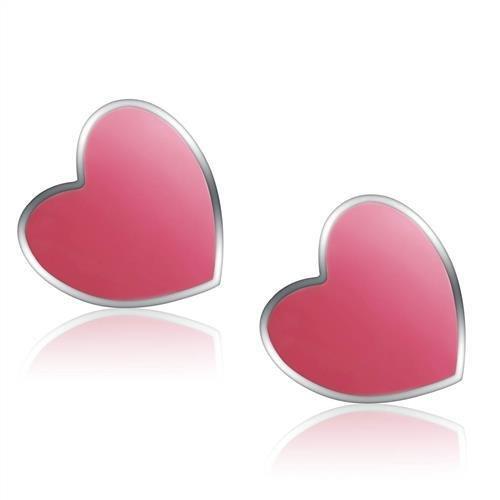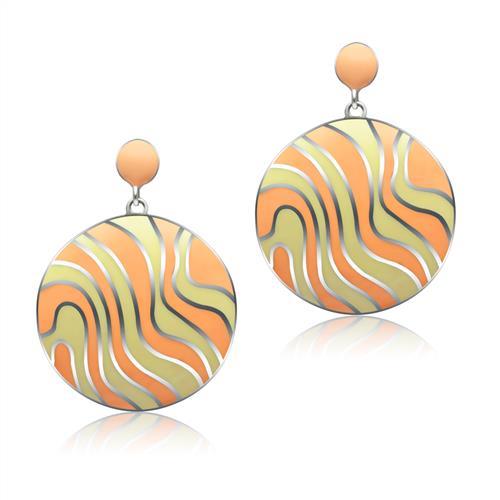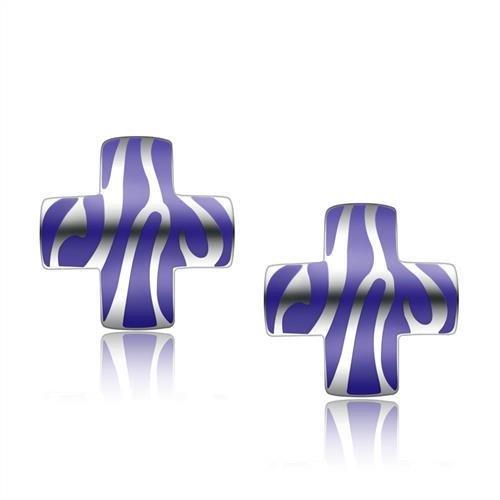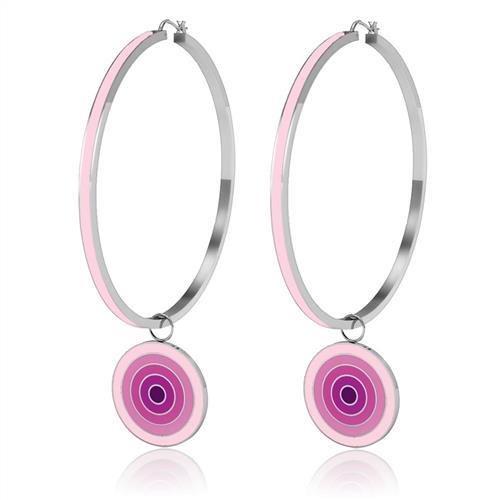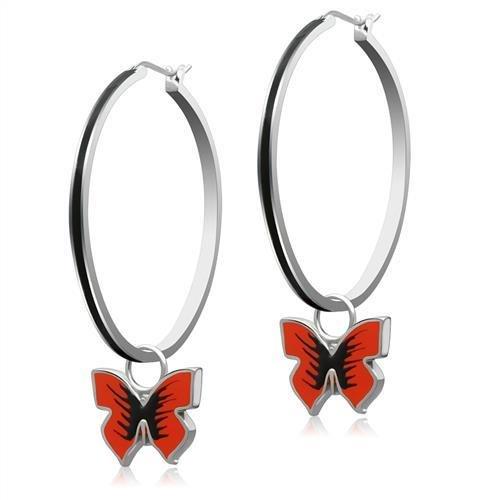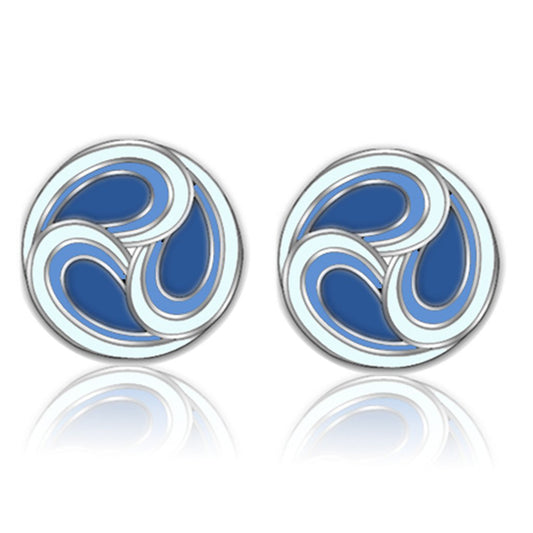When buying or selling a gold ring with diamonds, understanding its worth requires evaluating factors like gold purity, diamond quality, and market trends. Whether you're looking at a yellow gold diamond ring as a gift, an engagement ring, or a timeless investment, this guide provides insights into pricing, valuation, and maximizing the ring’s value.
Quick Summary: What Determines a Gold Ring's Worth?
The worth of a gold ring with diamonds is influenced by multiple factors:
- Gold Purity: Rings made of 14k or 18k gold hold more value than 9k due to higher gold content.
- Diamond Carat Weight and Quality: Diamonds are priced by carat, clarity, cut, and color.
- Design and Style: A diamond solitaire ring or cluster diamond ring can be priced differently based on its craftsmanship.
- Market Demand: Vintage and pre-owned diamond rings may carry unique appeal, impacting value.
Learn more about our exclusive gold ring collection.
The Role of Gold Purity in Valuation
Understanding Gold Purity
Gold is categorized by karat (k), which indicates purity. For example:
- 9ct Gold: Contains 37.5% pure gold, often more affordable.
- 14ct Gold: A blend of durability and elegance, ideal for everyday wear.
- 18ct Gold: Contains 75% pure gold, offering higher intrinsic value.
Explore our curated selection of 14k gold rings to find pieces that balance value and beauty.
Why Gold Purity Matters
A higher karat gold ring not only shines brighter but also holds better resale value. However, durability decreases as gold purity increases, making lower karat gold suitable for more intricate designs like custom jewelry settings.
Evaluating Diamond Worth: Key Considerations
Carat Weight and Cut
The diamond carat weight significantly affects the price of the ring. A larger diamond isn’t always more valuable—its cut, shape, and proportions play an equally critical role in reflecting light and enhancing brilliance.
Common cuts include:
- Round Cut Diamonds: Classic and universally loved.
- Princess Cut Diamonds: A modern, square-shaped favorite.
- Baguette Diamonds: Often used as accents in vintage designs.
Want to compare the sparkle? Browse our gold rings featuring various diamond cuts.
Why Design and Style Matter
The style of the ring adds personality and can influence its market value. Options range from eternity rings to antique gold rings, each carrying unique craftsmanship and history.
Popular Styles:
- Diamond Solitaire Rings: Simple yet elegant, highlighting a single diamond.
- Cluster Diamond Rings: A group of diamonds that maximizes brilliance.
- Vintage Diamond Rings: Often associated with historical significance and unique designs.
If you're drawn to elegance, explore our exclusive gold ring collection.
The Impact of Diamond Clarity and Color on Value
What is Diamond Clarity?
Diamond clarity refers to the presence of internal inclusions or external blemishes. Clarity grades range from Flawless (FL) to Included (I), with VS (Very Slightly Included) and SI (Slightly Included) diamonds offering a balance of quality and affordability. The fewer the inclusions, the greater the diamond’s brilliance—and its value.
Pro Tip: When buying a gold ring with diamonds, opt for a clarity grade of VS2 or higher for optimal beauty without an exorbitant price.
Understanding Diamond Color
Diamonds are graded on a color scale from D (colorless) to Z (noticeable color tint). Colorless diamonds fetch the highest prices, while near-colorless options (G-H grades) offer a great combination of value and appearance.
Browse our collection of 14k gold rings featuring diamonds with superior clarity and color to suit your taste.
Certification and Appraisal: Key to Trust and Value
Why Certification Matters
A certified diamond ensures that its cut, carat, clarity, and color are accurately graded. Common certification bodies include:
- GIA (Gemological Institute of America): The gold standard in diamond grading.
- IGI (International Gemological Institute): Recognized for consistency and reliability.
When purchasing or selling a ring, certification provides transparency and can significantly boost gold ring value.
Jewelry Appraisals for Insurance
Having your gold ring appraised establishes its value for insurance purposes, offering peace of mind in case of loss or theft. Consider periodic appraisals as market values for gold and diamonds fluctuate.
Explore how our gold rings meet certification standards, ensuring authenticity.
Ensuring Longevity: Cleaning and Care Tips
Caring for your gold ring with diamonds can preserve its beauty and value over time. Here’s how:
- Regular Cleaning: Use a mild soap solution and a soft toothbrush to gently clean the ring. Avoid abrasive chemicals that may damage gold or diamonds.
- Professional Maintenance: Schedule inspections with a jeweler to check for loose settings or damage.
- Safe Storage: Store your ring in a soft-lined box to prevent scratches, especially if it’s a vintage diamond ring.
Should You Insure Your Gold and Diamond Ring?
Absolutely! Gold and diamond insurance protects your investment. Policies typically cover theft, accidental damage, or loss, ensuring peace of mind for treasured pieces.
Investment and Resale Value of Gold Rings
Gold rings with diamonds can be both sentimental and financial investments. Factors like market gold prices, demand for yellow gold diamond rings, and historical significance of antique gold rings contribute to resale value. Rings crafted from 18ct gold or featuring unique custom diamond settings often fetch higher prices.
Check our selection of pre-owned and bespoke rings for options that blend timeless design with investment potential.
Resale Value of Gold and Diamond Rings
How to Evaluate Resale Value
When selling a gold ring with diamonds, understanding its resale value is crucial. Here's what to consider:
- Gold Weight and Purity: Higher gold purity (e.g., 18ct gold) typically commands better resale prices. The gold weight in grams directly impacts its intrinsic value.
- Diamond Quality: Larger carat weights, superior clarity, and color grades significantly enhance resale value.
- Market Trends: Rings with vintage appeal or unique designs, such as hidden halo settings, can fetch premium prices.
For inspiration, browse our collection of 14k gold rings, which blend value and enduring style.
The Role of Lab-Grown Diamonds
Lab-grown diamonds have emerged as a sustainable and affordable alternative to natural diamonds. These diamonds are virtually indistinguishable from their natural counterparts in terms of appearance and durability. While their resale value may be lower, they are an excellent choice for budget-conscious buyers or those prioritizing environmental impact.
Key Benefits of Lab-Grown Diamonds:
- Environmentally friendly production.
- Cost savings of 30–40% compared to natural diamonds.
- Availability in various cuts and sizes for customization.
Learn more about the innovative styles incorporating lab-grown diamonds in our gold rings collection.
Market Trends and Best-Selling Styles
Trending Gold Ring Styles
The jewelry market evolves continuously, with some designs consistently capturing attention:
- Diamond Solitaire Rings: A timeless classic for engagements or everyday wear.
- Eternity Rings: Symbolic of everlasting love, often used as anniversary gifts.
- Cluster Rings: Perfect for maximizing sparkle with multiple diamonds.
Vintage-inspired designs, like antique gold rings, remain popular due to their uniqueness and craftsmanship.
Factors Driving Demand
- Personalization: Buyers increasingly seek custom jewelry design services, such as engraving or unique settings.
- Sustainability: Ethical considerations are boosting interest in lab-grown diamonds and recycled gold.
- Investment Appeal: Rings with certified diamonds and high-purity gold are seen as secure investments.
Key Takeaways: Buying or Selling Gold Rings with Diamonds
Whether you’re purchasing or selling, here’s a quick checklist to ensure you maximize value:
- Evaluate Gold Purity: Opt for 14k or 18k gold for a balance of beauty and durability.
- Focus on Diamond Quality: Prioritize clarity, color, and carat weight when comparing options.
- Certify and Insure: A certified diamond with insurance adds trust and protection to your investment.
- Consider Resale Potential: Vintage or bespoke designs often hold long-term appeal.
Discover timeless pieces in our curated gold ring collection and make a purchase that combines sentiment and value.
Final Thoughts
Gold rings with diamonds are more than beautiful adornments—they're expressions of love, craftsmanship, and smart investment. By understanding the factors affecting their value, you can confidently navigate the market, whether buying a yellow gold diamond ring or appraising a family heirloom.
Visit Precious Pulse Jewelry today to explore our exquisite range of rings and find a piece that’s perfect for you.
FAQ: Common Questions About Gold Rings with Diamonds
1. How do I determine the authenticity of the diamonds in my gold ring?
Authenticity can be verified through diamond certification provided by organizations like GIA or IGI. Certified diamonds come with detailed reports on their cut, color, clarity, and carat weight, ensuring transparency.
2. What’s the difference between white gold, yellow gold, and rose gold in terms of value?
The value is primarily determined by the gold purity (karat) rather than its color. However, yellow gold is often considered more traditional, while white and rose gold appeal to modern tastes. The alloy composition may slightly affect durability but not overall value.
3. Do settings like prongs or bezels affect a ring’s worth?
Yes, intricate or custom settings, like hidden halo settings, can increase a ring’s craftsmanship value. However, simpler settings, such as prongs, focus on maximizing the diamond's visibility rather than the design's complexity.
4. Can I trade in my gold ring with diamonds for a new one?
Yes, many jewelers offer trade-in programs where you can apply the value of your existing ring toward a new purchase. Ensure the ring is appraised first to understand its current market value.
5. Are vintage gold rings more valuable than modern designs?
Vintage gold rings can be more valuable if they have historical significance, unique craftsmanship, or use rare design elements. Their condition and provenance also play a role in determining worth.
6. How does the size of the diamond affect the value of a gold ring?
Larger diamonds often fetch higher prices, but other factors, such as clarity, cut, and color, contribute equally. A poorly cut large diamond may be less valuable than a smaller, high-quality stone.
7. Are second-hand gold rings with diamonds a good investment?
Second-hand gold rings can be an excellent investment if purchased at a fair market value. They often cost less than new rings but retain similar intrinsic value due to their gold and diamond content.
8. What’s the impact of wear and tear on the value of a gold ring with diamonds?
Scratches, loose stones, or damaged settings can reduce a ring’s resale value. Regular maintenance, such as polishing and prong tightening, can help preserve its worth.
9. How do lab-grown diamonds compare to natural diamonds in terms of value?
Lab-grown diamonds are generally less expensive than natural diamonds. While they offer the same visual appeal and durability, their resale value is often lower due to lower market demand.
10. Can I increase the value of my gold ring by customizing it?
Customizing a ring, such as upgrading the setting or adding accent diamonds, can increase its aesthetic appeal and sentimental value. However, the resale value depends on the market's interest in the design.
These FAQs aim to address all your lingering questions about determining the value of a gold ring with diamonds. If you have further inquiries, don’t hesitate to contact us or explore our collection at Precious Pulse Jewelry.
